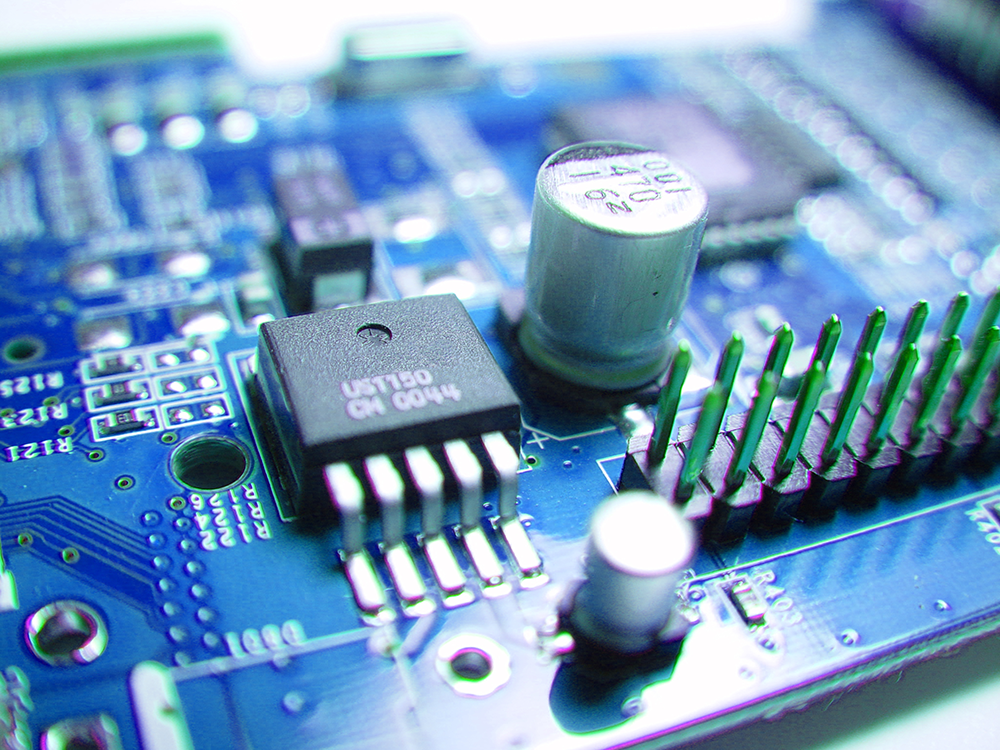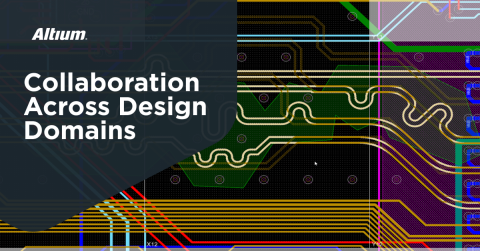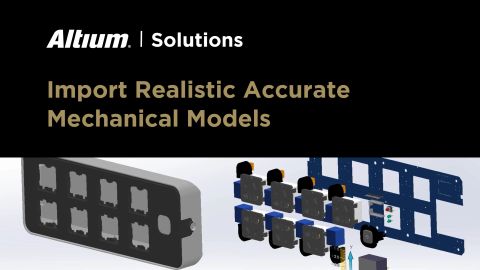ISO 13485 Compliance: Tools for PCB Designers and Manufacturers

Altium Concord Pro™ as a standalone product and brand name has been discontinued and the capabilities are now available as part of our Altium enterprise solutions. Learn more here.
Of all the regulated industries you can work in as an electronics designer, medical devices come with stringent industry and governmental standards that must be followed. If your new product is intended to diagnose or treat diseases, and if you want to market it to the masses, you’ll need to get approval from the Food and Drug Administration (FDA) in the United States, European Medicines Agency (EMA) in Europe, or other regulatory body. These regulations are all focused on safety and effectiveness, but there is another set of standards that need to be addressed during design and manufacturing.

ISO 13485 is one of those industry-specific standards as it pertains to the design and manufacture of medical devices. Most printed circuit design (PCB) designers focus on IPC standards for design and ISO 9001 for quality, but ISO 13485 compliance goes beyond these in terms of medical device quality and efficacy. With more people working remotely, a cloud design and data management solution for medical PCB design helps PCB manufacturers identify quality problems early and address them before a new product hits the production line.
What’s in the ISO13485 Quality Standards?
ISO 13485 specifies requirements for any organization directly involved in the medical device life cycle and defines requirements for quality management systems (QMS). The current ISO 13485:2016 revision aligns these important quality standards with U.S. FDA requirements. Note that ISO 13485 compliance and certification is mandatory in some countries, and the regulatory requirements in U.S. 21 CFR 820.30 are consistent with the ISO 13485:2016 standards.
Medical electronics designers and manufacturers who want their products to pass an ISO 13485 audit and stand a greater chance of receiving FDA qualification should work with a PCB manufacturer that has received ISO 13485 certification. Note that ISO 13485 does not define design requirements; it defines process requirements that ensure product quality and regulatory compliance. Designers and PCB manufacturers with a compliant QMS need to follow some important documentation requirements for medical PCBs:
- Identifying defects and recording solutions: Design defects that are identified before and during manufacturing need to be identified, and ideal solutions need to be recorded. Designers and manufacturers both have a role to play in correcting quality defects and recording solutions. Aspects of a design that do not conform to regulatory requirements and any corrective action should also be recorded. These requirements apply to both corrective and preventive action.
- Supplier evaluation and traceability: For electronics and PCBs, materials and components need to be traceable and have thorough documentation that supports intended device performance. Component manufacturer information and documentation (e.g., datasheets) need to be visible. If necessary, designers can link components back to ISO-certified manufacturers to ensure compliance with QMS software tools’ right set.
- Auditability: Data in the above two areas needs to be tracked internally and, if needed, made available to 3rd parties (e.g., regulators).
There are other requirements that need to be followed by manufacturers and other members of the medical supply chain. Still, the above points are the most important for medical PCB design and manufacturing. They also happen to be the most challenging when the manufacturer and design team aren’t in the same location. Cloud-based QMS solutions have a role to play in ISO 13485 compliance and documentation, both for designers and manufacturers.
One of the challenges involved in documentation and reporting is in the area of IP protection. This is particularly true when QMS procedures are implemented with a cloud-based software solution. This is where any software solution for ISO 13485 compliance, including cloud-based solutions, needs to provide control over user access, sharing, and recordkeeping. When working in this type of secure environment, designers and manufacturers.

ISO 13485 Compliance for PCB Design and Manufacturing in the Cloud
By far, the best way to ensure product quality is to collaborate with your manufacturer early in the design process. This is even more important for ISO 13485 compliance as members of each team can identify product defects or DFM problems early. When the right cloud platform is used for this collaboration, members of a design team and an ISO 13485 certified manufacturer can quickly inspect, annotate, and correct any design defects that affect product efficacy and regulatory compliance.
When you need to ensure ISO 13485 compliance for your new medical device, your design team and manufacturer can collaborate on all aspects of your design using Altium Concord Pro™ on the Altium 365™ platform. Designs for your medical devices can be imported into Altium Designer for viewing and editing by multiple team members. You’ll also have access to a set of documentation features for PCB design that help streamline the design and documentation processes needed for ISO 13485 compliance:
- Access project data within Altium Designer: All data in a project can be accessed within Altium Designer by members of a design team or a manufacturer. Your enclosure data can also be imported into popular MCAD programs for mechanical design. Once edits are applied, these edits are pushed back to the web and can be viewed in a Concord Workspace.
- Supplier tracking: Component lifecycles, specifications, and documentation can be accessed within the Altium Concord Pro web interface, both for standard and customized components.
- Direct commenting on design data: Each member of a design team can comment on any design defects or DFM violations that may affect product quality or efficacy. An engineer can identify specific solutions as part of their documentation requirements. This can be done within the schematic, and when revisions are pushed back to your Concord Workspace.
- Revision tracking: Once a correction is made to a design, revisions are tracked in the cloud. When a user pushes a modified design to the Concord Workspace, they can include a comment that deals with the extent of the change and how it addresses any quality defects. These comments are then viewable on the web through the Concord Workspace, or they can be viewed when a project is viewed in Altium Designer.
- Version control: If a design team decides they need to roll back to a previous version of a file, they can easily roll back to a previous version of the file using the Storage Manager panel in Altium Designer. The team can also clone a project when needed.

Altium Concord Pro and Altium 365 are bringing an unprecedented amount of integration to the electronics industry until now relegated to the world of software development, allowing designers to work from home and reach unprecedented levels of efficiency.
We have only scratched the surface of what is possible to do with Altium Concord Pro on Altium 365. You can check the product page for a more in-depth feature description or one of the On-Demand Webinars.











